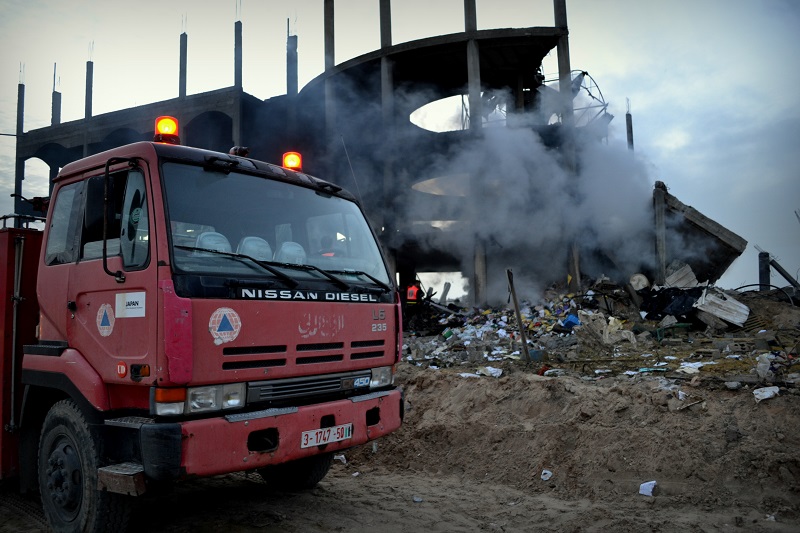Tag: Jabaliya
-

Threats of lethal Israeli violence stop a weekly demonstration in the Gaza Strip
5th March 2014 | International Solidarity Movement, Charlie Andreasson | Gaza, Occupied Palestine The regular Friday demonstration at the “buffer zone” east of Jabaliya was stopped by Palestinian police and security forces. The Israel had send a message via Egypt to the Palestinian authorities in Gaza that it would not tolerate any demonstrations and that it intended…
-

Video and photos: Israeli bullets and tear gas target popular resistance in Gaza
25th February 2014 | International Solidarity Movement, Charlie Andreasson | Gaza, Occupied Palestine (Video by Marco Varasio) At al-Shifa hospital Mohammed Helles, age 14, is laying in a coma with an uncertain outcome after he was shot, with what appeared, to be a tear-gas canister in the head and parts of it penetrated his brain. He had…
-

Video and photos: Israeli forces injure 17 in popular resistance east of Gaza
17th February 2014 | International Solidarity Movement, Charlie Andreasson | Gaza, Occupied Palestine An estimated 400 – 500 people, most in their late teens, gathered at the hillside east of Jabaliya for the recurrent demonstration against the occupation. There was no organizer, leader or banners, and the demonstration was largely chaotic. Stones were thrown, mostly from quite…
-
Israeli gunfire and tear gas injure five Palestinians at a protest north of Gaza
10th February 2014 | International Solidarity Movement, Rosa Schiano | Gaza, Occupied Palestine On Friday, 7th February, hundreds of Palestinian youth joined a weekly demonstration of popular resistance along the separation barrier east of Jabaliya, in the northern Gaza Strip. Aware of attacks by the Israeli army, many were equipped with onions, water and yeast to relieve…


